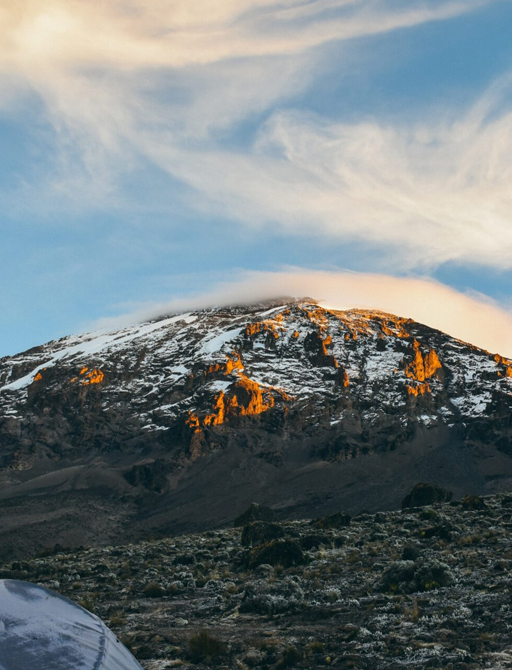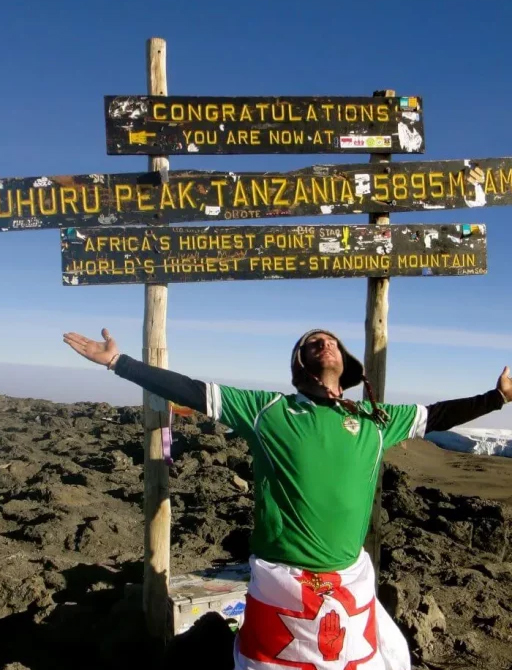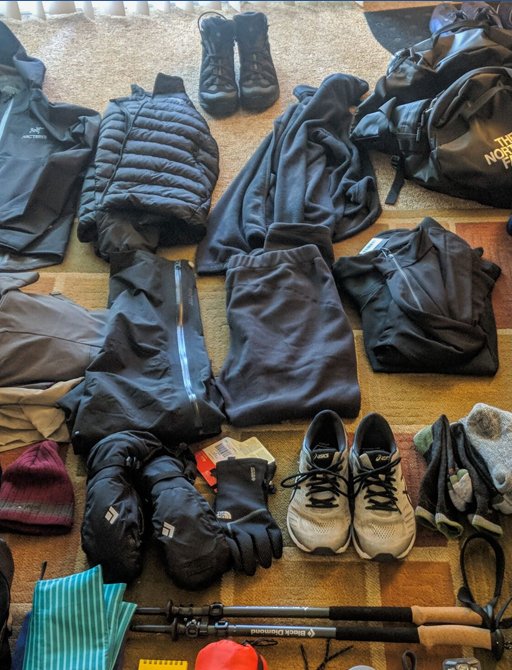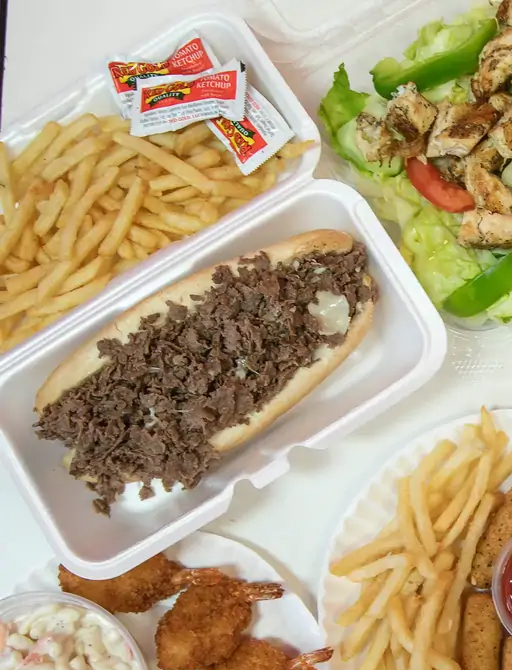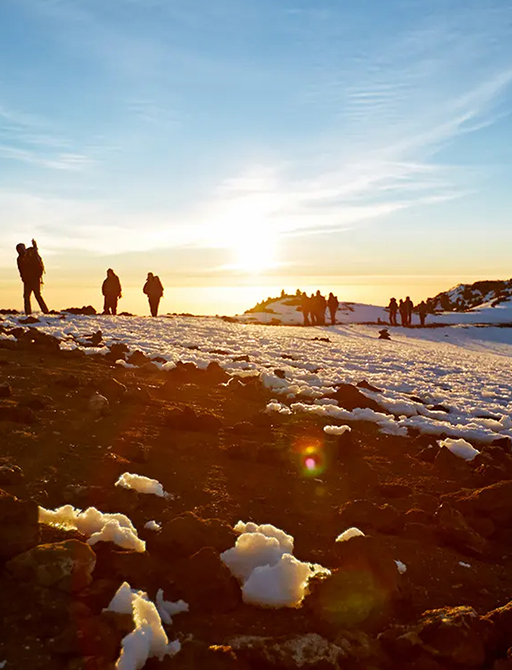Climbing Kilimanjaro Faq
Welcome To Climbing Kilimanjaro Faq
What is Climbing Kilimanjaro really like?
Climbing Kilimanjaro is a physically demanding, but rewarding adventure. It involves several days of hiking through diverse terrains including rainforests, alpine deserts, and glacial zones. Experiences may vary due to altitude sickness or weather conditions.
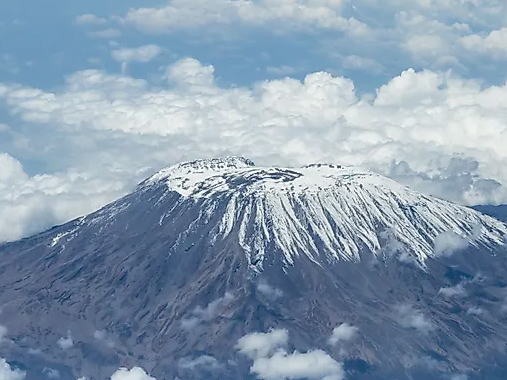
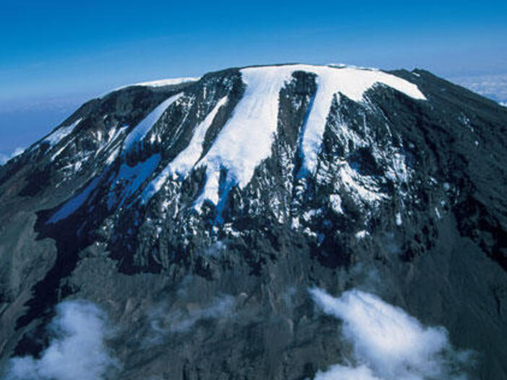

How to get to Mount Kilimanjaro?
The nearest airport to Kilimanjaro is Kilimanjaro International Airport (JRO) in Tanzania. Many international flights connect through Dar es Salaam or Nairobi.
You get to Kilimanjaro via Kilimanjaro International Airport. From there, a bus or taxi can take you to Moshi or Arusha, towns at the foot of the mountain where climbs typically start.
Do I need a visa for Tanzania?
Yes, a visa is required for most visitors to Tanzania. It can be obtained online, from a Tanzanian embassy, or on arrival. It's advisable to check the latest Tanzania Visa requirements before traveling.
What vaccinations do I need?
Vaccinations for Hepatitis A, Typhoid, and Yellow Fever (required if you're coming from a country where it's prevalent), and routine immunizations like MMR and diphtheria-tetanus-pertussis are recommended. Consult with a travel doctor for personalized advice.
Which is the best route for Kilimanjaro Climb?
The best route depends on your experience, fitness, and personal experiences. The Marangu route is popular due to its relative ease, but Machame offers more acclimatization and scenery.
Is Kilimanjaro a technical mountain?
Kilimanjaro is considered a non-technical mountain, meaning it can be climbed without advanced mountaineering skills or specialized equipment like ropes and crampons.
When is the Best Time to Climb Kilimanjaro?
The Best Time to Climb Kilimanjaro is during the dry seasons: January to mid-March and June to October. These periods offer the most favorable weather conditions.
What kind of food is prepared during Kilimanjaro Climb?
Food during the Kilimanjaro climb is nutritious and energy-dense. It is usually a mix of local and international cuisine, prepared by cooks accompanying the trek. Expect porridge, fruits, soup, pasta, rice, chicken, and vegetables. Dietary needs can often be catered for.
How to use the shower and use the loo?
Most trekkers use basic portable toilets or designated pit latrines at campsites. Showers are non-existent, but some trekkers use wet wipes for hygiene. Drinking water is often sourced from mountain streams and then treated.
What is the climate like?
Kilimanjaro has multiple climate zones, ranging from tropical at the base to arctic conditions at the summit. As you ascend, expect hot and humid conditions to give way to cold and dry weather. Prepare for potential rain and freezing temperatures.
Tour Guides
Best Time To Climb Kilimanjaro
Technically, you can climb Mount Kilimanjaro at any given time of year. But there are certain months which will make your climbing experience better and worse. This is why it’s important to know What is the Best Time to Climb Kilimanjaro.
High Season
July and August are the peak months in Mountain Kilimanjaro, so if you’re planning to climb Kilimanjaro during this period, book in well-advanced.
Low Season
If rain is not a big concern, you can climb Kilimanjaro in the wet season and shoulder season which receives fewer numbers of crowds.
Kilimanjaro Climbing Cost
Arguably, Mont Kilimanjaro is the perfect spot for adventure lovers, globally. If you planning to scale this mountain, you show how much it cost to climb it. In this guide, we have done a total breakdown of all the factors that are involved in Kilimanjaro Climbing Cost.
Tour Operator
Typically, your biggest expense will be the fee you pay to your chosen tour operator. This cost is inclusive of several key elements
Park Fees
Conservation fee: $70 per day
Camping fee: $50-$60 per night
Rescue fee: $20 per trip
Kilimanjaro Climbing Gear List
Arguably, Mont Kilimanjaro is the perfect spot for adventure lovers, globally. If you planning to scale this mountain, you show how much it cost to climb it. In this guide, we have done a total breakdown of all the factors that are involved in Kilimanjaro Climbing Cost.
The next essentials are camping gear. Your success rate in Kilimanjaro highly depends upon the camping gear you carry with you. So, make sure you are carrying the high-quality and right gear before you climb Kilimanjaro.
Head Gears are also important aspects of the Kilimanjaro Gear List. They protect you from the blistering sun during Kilimanjaro Climbing. Here are some of our recommended head gears to you must need to consider.
Kilimanjaro Foods
During your Mount Kilimanjaro Climbing expedition, you can expect a diverse range of food options that provide a perfect blend of local African cuisine and high-energy mountaineering meals.
High-Energy
During the actual Kilimanjaro Climb, meals are designed to provide the calories and nutrition needed for intense physical effort. Porters and chefs, using portable stoves, cook meals even at the high camps.
Breakfast
Hot drinks like tea, coffee, or hot chocolate
Porridge or cereal for a healthy start
Scrambled eggs, bacon, and sausages for protein
Fresh fruits and toast with butter, jam, or marmalade.
Kilimanjaro Altitude Sickness
Altitude sickness, also known as Acute Mountain Sickness (AMS), is a significant risk when ascending Kilimanjaro due to the rapid elevation gain.
Symptoms
Recognizing the signs of altitude sickness can be vital in ensuring a successful and safe Kilimanjaro Climb.
Preventing
There are several ways to mitigate the risk of AMS during a Mount Kilimanjaro Climbing expedition:
Tipping In Kilimanjaro
Gratuities or Tipping in Kilimanjaro, at the end of a successful climb, carry a deep-seated tradition and noteworthy significance. It's not only a token of gratitude but an essential part of local customs.
Helicopter
With the mission of making Kilimanjaro Africa's safest tourist destination, search, and rescue companies operate high-altitude helicopters crewed by trained medical personnel.
Why Is Tipping
The porters, guides, and cooks are key to your success in summiting Mount Kilimanjaro. They not only ensure you are safe and comfortable during your journey but also provide emotional support when the climb gets tough.
Climbing Kilimanjaro Faq
Climbing Kilimanjaro is a physically demanding, but rewarding adventure.
Mount Kilimanjaro
The nearest airport to Kilimanjaro is Kilimanjaro International Airport (JRO) in Tanzania. Many international flights connect through Dar es Salaam or Nairob
Do I Need A Visa
Yes, a visa is required for most visitors to Tanzania. It can be obtained online, from a Tanzanian embassy, or on arrival.
Electronic Gadgets On Mount Kilimanjaro
Climbing Mount Kilimanjaro, one of the Seven Summits in the world, is a dream come true for many adventure enthusiasts. And to enhance your experience and document this journey, electronic gadgets are invaluable.
Smartphones
In this era of advanced technology, smartphones are a must-have gadget, even on the peaks of Kilimanjaro.
Cameras
Despite smartphones being handy, nothing beats the quality and control offered by a dedicated camera.
kilimanjaro Rescue
Kilimanjaro Rescue represents the crucial emergency procedures designed to swiftly respond and evacuate climbers who face health crises or other emergencies while ascending Mount Kilimanjaro.
Helicopter
With the mission of making Kilimanjaro Africa's safest tourist destination, search, and rescue companies operate high-altitude helicopters crewed by trained medical personnel.
Altitude Sickness
Your safety is our number one priority, and we aim to provide you with all the information needed to prevent and deal with altitude sickness.
Kilimanjaro Porters
Scaling Kilimanjaro is an immense feat, made feasible by the dedication of porters who tirelessly carry heavy loads and prepare camps for climbers.
Kilimanjaro Porters
The Kilimanjaro Porters comprises a team of committed individuals tasked with helping tourists in carrying their gear during the trek.
Key Responsibilities
The main job of a porter is to carry all the luggage belonging to the entire team. The list of items includes gear for each climber, tents, oxygen bottles, stretchers, medical kits, food, sleeping bags, hyperbaric chambers, and toilets.
Kilimanjaro Private Toilet Tents
Discover the ultimate comfort and convenience during your Mount Kilimanjaro expedition with our private toilet tents.
Privacy Amidst
One of the significant advantages of Kilimanjaro Private Toilet Tents is the privacy they provide.
Hygiene
Maintaining proper hygiene and sanitation is essential while Climbing Mount Kilimanjaro.
Kilimanjaro How Long Does It Take
Many travelers planning to climb Mount Kilimanjaro often wonder How Long It Will Take To Climb Kilimanjaro.
How Many Days
The number of days required to Mount Kilimanjaro Climbing can vary significantly based on the route you choose and your climbing experience.
Longer Routes
One major factor to consider when deciding on the duration of your Kilimanjaro climb is the route's length.
Customize Your Trip
To start planning your tour with us, you can create an itinerary from scratch, or modify one of our suggested itineraries. Want to visit a beautiful destination, or start an adventure to reach the top? We will make it happen.
Testimonials
What Client Say About Us?My dear Venance, I haven't really finished unpacking my bags yet, but I already want to tell you that we all had a great pleasure spending these holidays in Tanzania, that the organization of the trip was excellent and that we loved it. our two guides who were really fantastic
Francois
North ParkMagnificent trip beyond what I had imagined! Fred was on top, we had a hard time leaving him. A big thank you for arranging our stay.
Christopher
North ParkHello Venance, We are back from the Kili and the safari. Everything went great! Thank you, for your idea of Lake Natron, it was really great these 2 days. Obviously the Kilimanjaro, incomparable compared to the safari. We did well to do it first, and we all got there.
